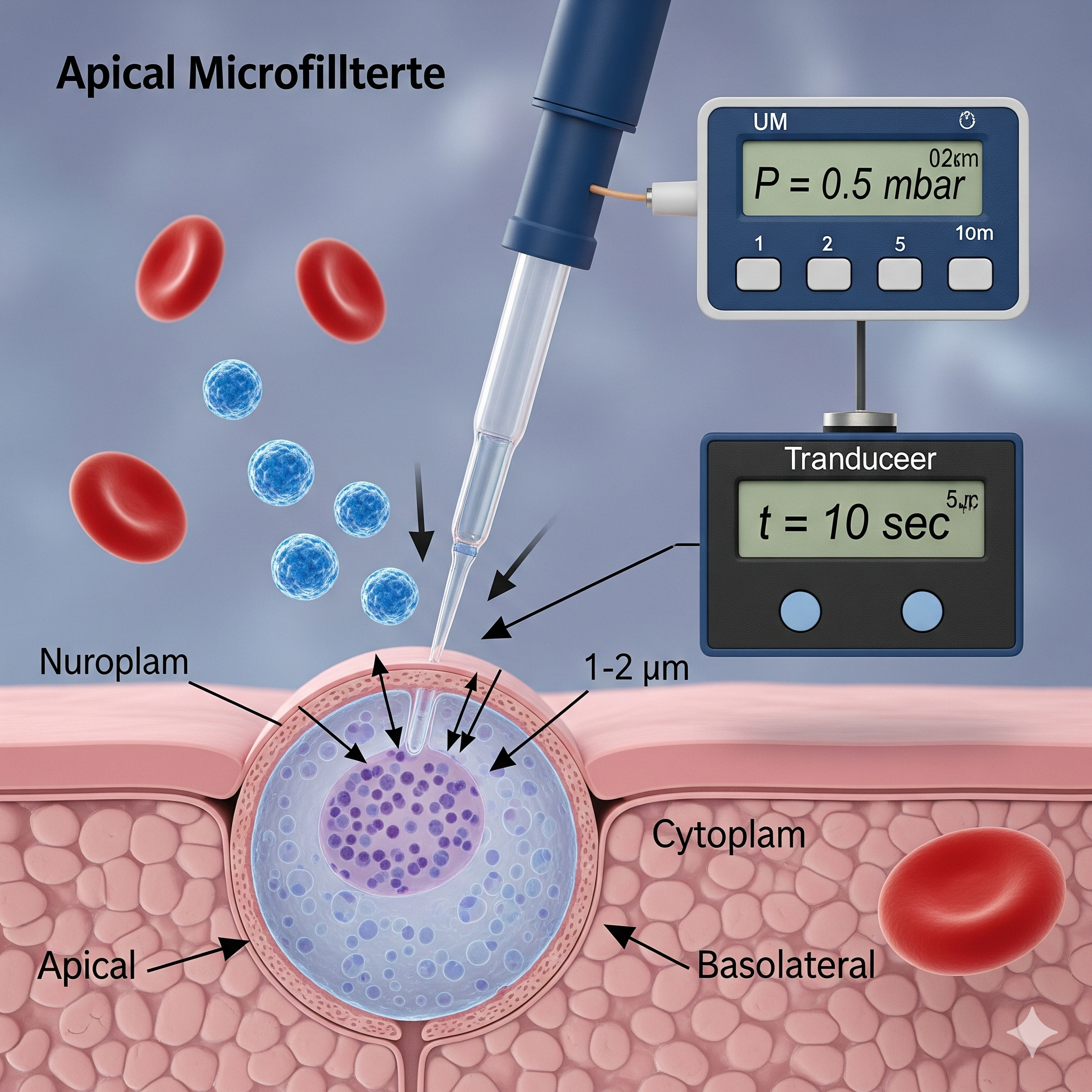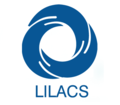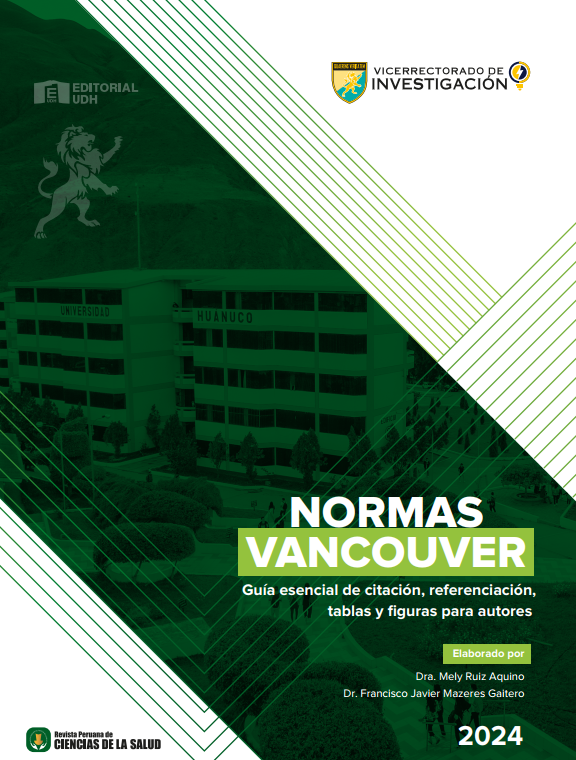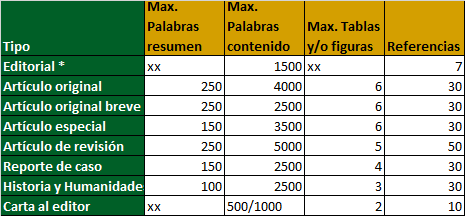Técnicas de medición de microfiltración apical en endodoncia: una revisión narrativa
DOI:
https://doi.org/10.37711/rpcs.2022.4.2.369Palabras clave:
Microfiltración apical, Técnicas de medición, Endodoncia, In vitro, In vivoResumen
Objetivo. Revisar la literatura mundial respecto a las técnicas de medición de microfiltración apical en endodoncia. Métodos. La presente es una revisión narrativa que consiste en la lectura y contraste de diferentes fuentes a través de una búsqueda en las bases de datos digitales: PubMed, SciELO y Google Académico. En la revisión de literatura fueron incluidos veintiún artículos, seleccionados de acuerdo a los criterios de inclusión establecidos. Resultados. Se hallaron las siguientes técnicas: penetración del tinte filtración de fluidos, disolución del tinte, método de infiltración de bacterias y toxinas, método de presión de aire, método electroquímico, método de radioisótopos, trazadores de solución de metal, método de difusión inversa, caries artificiales, microscopía electrónica de barrido, microscopio electrónico de transmisión, microtomografía computarizada. Conclusiones. Es deseable un sellado apical perfecto para evitar que las bacterias restantes y sus endotoxinas alcancen el ápice de la raíz. Se considera que la filtración apical es la causa común de falla endodóntica y está influenciada por muchas variables, como la variación en las técnicas de obturación, las propiedades químicas y físicas de los diversos materiales de obturación del sistema de conducto radicular y la presencia o ausencia de la capa de barrillo dentinario.
Descargas
Referencias
Ingle J, Backland L. Endodoncia. 5ª ed. México D.F.: McGraw-Hill Interamericana; 2002.
Ruddle CJ. The ProTaper technique. Endodontic Topics [Internet]. 2005 [Consultado 2022 Abr 28]; 10: 187-190. doi: 10.1111/j.1601-1546.2005.00115.x
Wu M, Wesselink P. Endodontic leakage studies reconsidered Part I. Methodology, application and relevance. Int Endod J. [Internet]. 1993 Ene [Consultado 2022 Abr
; 26(1): 37-43.
Von Fraunhofer J, Fagundes D, McDonald N, Dumsha T. The effect of root canal preparation on microleakage within endodontically treated teeth: an in vitro study. Int Endod J. [Internet]. 2000 Abr [Consultado 2022 Abr 28]; 33(4): 355-360.
Leonardo R, Leonardo M. Endodoncia: conceptos biológicos y recursos tecnológicos. Sao Paulo: Artes Médicas;2009.
Higa R, Torabinejad M, McKendry D, Millian P. The effect of storage time on the degree of dye leakage of rootend filling materials. Int Endod J. [Internet]. 1994 [Consultado 2022 Abr 28]; 27: 252-256.
Nevares J. Efcacy of pro-taper next compared with reciproc in removing obturation material from severely curved root canals a micro-computed tomography study. Basic Res. Technol. [Internet]. 2016 [Consultado 2022 Abr 28]; 42: 803-808
Whitworth J. Methods of filling root canals: principles and practices. Endodontics [Internet]. 2005 [Consultado 2022 Abr 28]; 12: 2-24.
Aslan H. Evaluating root canal confguration of mandibular incisor with cone beam computed tomography in a Turkish population. J. Dent. Sci. [Internet]. 2014 [Consultado 2022 Abr 28]; 10: 359-364.
Angerame D. Resistance of endodontically treated roots restored with different fber post systems with or without post space preparation in vitro analysis and SEM investigation. Endodozia [Internet]. 2016 [Consultado 2022 Abr 28]; 30: 111-119.
Shaikh A. A novel approach to construction and working of fluid fltration model: an experimental study. J. Sci. Innov. Res. [Internet]. 2017 Feb [Consultado 2022 Abr 28]; 6(2): 55-58.
Moradi S. Comparison of fluid fltration and bacterial leakage techniques for evaluation of micro-leakage techniques in endodontics. Dent. Res. J. [Internet]. 2013 Feb [Consultado 2022 Abr 28]; 12(2): 109-114.
Timpawat S. An in vitro study of the comparative effectiveness of obturating curved root. Oral Surg. Oral Med. Oral Pathol. [Internet]. 1983 Feb [Consultado 2022 Abr 28]; 55(2): 180-185.
Bradshaw GB. The sealing ability of injection-molded thermo-plasticized gutta-percha. Int. Endod. J. [Internet]. 1989 Ene [Consultado 2022 Abr 28]; 22(1): 17-20.
Saunders EM. The effect of variation in thermo-mechanical compaction techniques upon the quality of the apical seal. Int. Endod. J. [Internet]. 1989 Abr [Consultado 2022 Abr 28]; 22(4): 163-168.
Hata G. Sealing ability of thermo-plasticized gutta-percha fill techniques as assessed by a new method of determining apical leakage. Int. Endod. J. [Internet]. 1995 Abr [Consultado 2022 Abr 28]; 21(4): 167-172.
Sutrave SD. Apical sealing ability of gutta-percha by lateral condensation, chloroform dip and eucalyptol dip obturation technique: an in vitro study. Endodontology [Internet]. 1995 [Consultado 2022 Abr 28]; 7: 1-7.
Girhota R. Scanning electron microscopic evaluation of sealing ability of root canals with various obturation techniques. Endodontology. [Internet]. 1999 [Consultado 2022 Abr 28]; 11: 15-20.
Al Dewani N. Comparison of laterally condensed and low temperature thermo-plasticizedgutta-percha root canal fillings. Int. J. Endod. [Internet]. 2000 Dic [Consultado 2022 Abr 28]; 26(12): 733-738.
Deitch AK. A comparison of fill density obtained by supplenting cold lateral condensation with ultrasonic condensation. J Endod. [Internet]. 2002 Sep [Consultado 2022 Abr 28]; 28(9): 665-667.
Cifticia A. Coronal micro leakage of four endodontic temporary restorative materials: an in vitro study. Oral Surg. Oral Med. Oral Pathol. Oral Radiol. Endo. [Internet]. 2009 [Consultado 2022 Abr 28]; 108: 67-70.

Publicado
Número
Sección
Licencia
Derechos de autor 2022 Ábilson Josué Fabiani Ticona, Ebingen Villavicencio Caparó, José Gonzalo Artieda Sáenz, Carla Alejandra Miranda Miranda

Esta obra está bajo una licencia internacional Creative Commons Atribución 4.0.





















